PHP vs Python: An In-Depth Comparison
1. Overview
Choosing a dependable and powerful programming language is the first step in creating a successful web development project. In this fierce competition, in order to build high-performing, scalable, secure, and adaptable online applications you have to hire reputed Python or PHP developers in India or across the globe. It has become vital to select a sensible technological basis, including the high level programming language.
As we can see in the above image from Google Trends, Python and PHP are the two most debatable and popular choices among enterprises when it comes to choosing between these programming languages. This blog has been curated with a special focus to bring forward all the clear differences between PHP and Python. Starting from the history of both these modern web development technologies, their features, implication and a clear difference between the two.
2. What is PHP?

Everyone in the bizz would definitely know that PHP is an abbreviation for Hypertext Preprocessor. PHP is an open-source, server-side scripting language used by maximum web developers for almost all types of server-side web development projects. It also helps in creating dynamic web pages or online applications. PHP is simple to integrate with almost all types of web servers and operating systems.
For a fact, we know that PHP is in the minds of every developer, it is a free, and efficient alternative to other scripting languages developed by Microsoft’s ASP. Non-technical users may quickly learn a few essential methods to make their web pages more manageable and valuable. It is also a general-purpose and server side programming language that you can use to make lots of projects, including Graphical User Interfaces (GUIs). The history of PHP is also something that’s worth knowing, so let’s jump into the next section to see what PHP’s history has to unveil.
According to w3Techs, 77.3% of websites in the globe are using PHP as their server-side programming language. PHP has more than 1.4 million questions on stackOverflow, which makes it one the most used programming language by programmers.
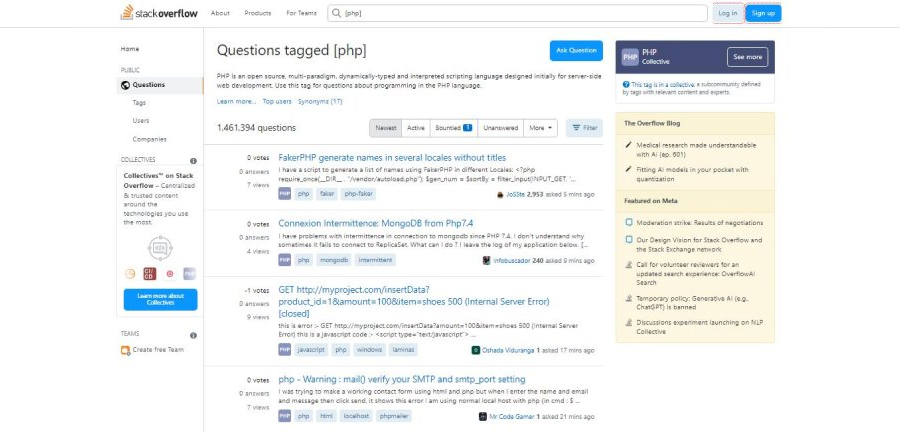
2.1 History of PHP Programming Language
It all started in the year 1995, when Rasmus Lerdorf invented PHP as a Perl hack. Yes, PHP did not start with the same name but it was initially known as Perl hack. Then again, two years in the year 1997, Zeev Suraski and Gutmans made some major modifications and rewrote it again and published PHP 2.0 with a new passer engine. This version of PHP 2.0 has turned the language into a scripting language for the server.
Then there were further additions and later it extended its arms with ODBC support and later it was added to PHP 3 in the year 1998. Open Database Connectivity is also supported under many platforms and email protocols have also been added. For increased performance, PHP version 4, which was published in the year 2000, has become an independent component of the web server. A most recent version of PHP is PHP 8.2.8, which was released on 6th July, 2023.
2.2 Why use PHP?
There are numerous reasons for developers to start using PHP for their web applications. It starts with the following needs like
- You need PHP to deal with server files for options like create, open, read, write.
- It is possible to send and receive cookies using PHP
- PHP will help you get data from a database and edit it.
- You can also build dynamic content using it
- It may be used to manage authentication and build members-only areas on your website.
- Excel and PDF documents can be created.
2.3 Features of PHP
PHP is one of the most commonly used programming languages and what is the reason behind this is because it is easy to use and because of the multiple features it offers as a general purpose language. The PHP code and syntax are mostly related to the C programming language with most of the structures that are well-organized and logical. In comparison to other programming languages, PHP is also simple to master and get into coding.
Some of the most salient features of PHP server side scripting language are
- PHP supports a variety of database interfaces, including MySQL, Oracle, PostgreSQL, and others, as well as database integration.
- It practically runs on almost all types of operating systems, including Windows, Mac OS, Linux, and Unix.
- The PHP scripts work on a variety of platforms which includes PCs, laptops, tablets, and smartphones. PHP is also compatible across several other servers, including IIS, Apache, and others.
- PHP’s object-oriented features help it run faster and include capabilities like inheritance and data encapsulation.
- The flexible nature of PHP development opens up to multiple possibilities that are restricted in other scripting languages. It’s simple to integrate with JavaScript, HTML, XML, and various programming languages.
- The error reporting and exception handling is another unavoidable feature of PHP. There can be multiple predefined error reporting constants that create error messages. PHP allows you to create an exception handler easily, allowing you for the display and correction of problems.
- PHP scripts perform better than several scripting languages, including JSP, PERL, ASP.NET, and others, in terms of efficiency and speed. The data loading and connectivity is higher which allows more effective management of database, email operations, and server administration.
- It displays Real-time Monitoring where a user’s most recent log entries can be registered. You may also look at information on CPU and memory use.
3. What is Python?

If we go by what the headman’s from Python Software Foundation has to say then Python is an object-oriented, interpreted programming language. There are modules, exceptions, extremely high level dynamic data types, and classes and many other factors that make Python language.
The history of python will be interestingly discussed in the next segment. For now, to define this well-known language, Python is that we can say it is a general-purpose programming language that may be used for a wide range of tasks. It has high-level data structures, dynamic typing, dynamic binding, and many other capabilities that make it ideal for both complicated program development and scripting. The Python program links all the components. It may also be expanded to make system calls to practically any operating system and run C or C++ programmes. Python is a global language used in a wide range of data science applications such as AI and ML due to its ubiquity and ability to operate on practically every system architecture.
3.1 History of Python
Python is not something that was developed in recent years. It’s been more than two decades. In the 1980s, the process of discovering Python was initiated by Guido Van Rossum and he began undertaking application-based work at Centrum Wiskunde & Informatica (CWI) in the Netherlands in December of 1989. It wasn’t something that was developed for the universe it uses, because it started as a hobby and for internal projects. Later there were web development companies who started to use it for their own projects and this popularized the usage of Python. Many versions of Python started to get released in the market. In February 1991, Rossum released the first version of Python (0.9.0). Python is now maintained by a core development team, while Rossum continues to play an important role in its direction. The latest version of Python is 3.12, which is scheduled to release in October, 2023.
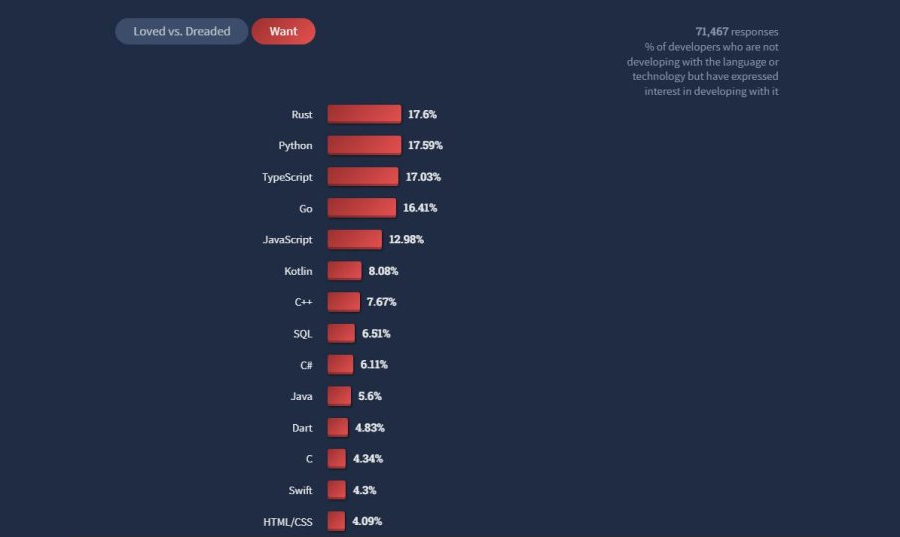
According to stackOverflow, Python is one of the most wanted technologies for web development in recent years with almost 17% share amongst its counterparts.
3.2 Why use Python?
Python was founded more than 30 years ago now, which is a long time for any programming language to build a strong community support. There are mature Python developers who are continuously evolving and supporting each other at all levels, from novice to expert. There is a wealth of material, guidelines, and for Python programming language there are visual learning option also available for learners and developers of all skill levels and ages to improve their understanding of the language
Python includes good library support that you may use to pick and save time and effort on the initial development cycle, thanks to its corporate backing and large supporting community. Many cloud media providers also provide cross-platform compatibility through library-like tools, which may be incredibly useful.
Python is a very user-friendly language with a lot of support and features that are simple to incorporate. The programming language is simple to learn and read, making it easier for newcomers to get started with coding. Python is the most popular programming language on stackOverflow with more than 2 million questions.
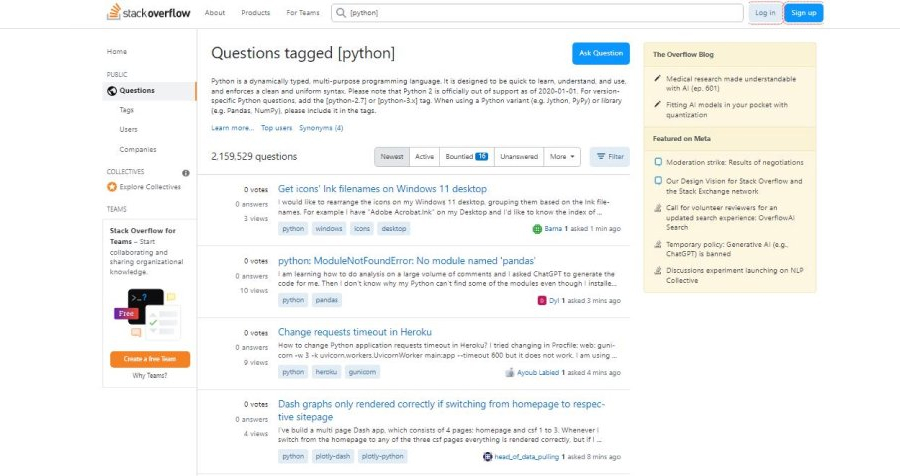
When a company sponsors a programming language, it expands quicker. For example, Facebook supports PHP, Oracle and Sun provide Java, and Microsoft supports Visual Basic and C#. Facebook, Amazon Web Services, and, most notably, Google all support the Python programming language.
3.3 Features of Python
1. Python is an easy to understand Language
Python is a simple programming language which is easy to read, write, study, and comprehend.
You can say that Python has a relatively easy learning curve which makes it simple to grasp and
Python code is straightforward to understand and has a basic code syntax. One of the most efficient features of python is to efficiently understand the language and deliver concise codes that are simple to read and write.
2. Python is also an Object-Oriented language like Java
Python is an object-oriented programming language that also supports functional programming. It is an object-oriented programming language. Inheritance and polymorphism are OOP (object-oriented programming) principles.
3. Python’s Open-Source features
Python is an open-source programming language that is always being improved by the community. It’s free, and the source code may be downloaded for free. The official Python Website is where you can get Python.
4. Standard Library with a Large Collection
The standard library is extensive, with several packages and modules that perform common and critical functions. You don’t have to build anything from scratch if you require anything that’s already in this standard library. You will be able to concentrate on more vital matters as a result of this.
5. Python as High-level language and full support for graphical user interfaces
Python supports GUI applications.. It has a large number of GUI frameworks that may be used to create a range of cross-platform web applications. It ties to technologies that are platform-specific. C++ is a mid-level language, while Python is a high-level language. It is simple to comprehend and brings the user closer. In this web development process, you can also use GUI frameworks such as PyQt, wxPython, tkinter,or Pyside.
4. PHP vs Python: In-Depth Comparison
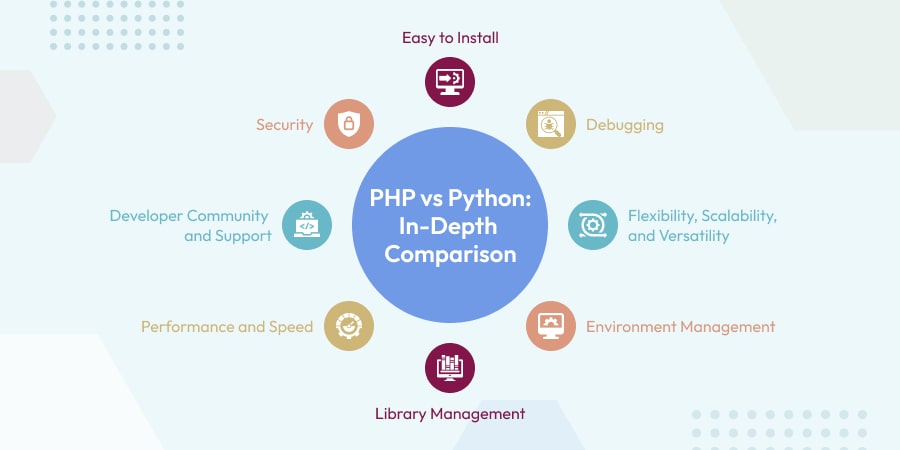
4.1 Easy to Install
Talking about both- PHP vs Python, it’s simple to set up. It works on Windows, OS X, and Linux, and is available for free on a number of shared hosting providers across the world.
Python installation may be a tricky task. If you’re running OS X, your machine already has a system version of Python installed. So, you just have to check the version and if it is out of date and incompatible with web app development. You will have to install new packages and if that’s not the case then you don’t have to install new packages on the Python system. To ensure that your system is as stable as possible, you’ll need to install a new version. Python may also be difficult to set up on Windows. However, if your company uses Linux, installing Python will be quite easy. While when it comes to PHP, it is way too easy to install and use. You can refer to this PHP installation guide while installing PHP.
So here if we count the score then PHP-1 and Python -0 since python is relatively complicated to install and use when compared to PHP.
4.2 Performance and Speed
Although, comparing the speed of these two popular technologies is difficult and stupid at the same time. Because we know both have different potential and Python vs PHP’s speed and performance is critical. Hardware resources, memory, storage space, code logic, hard disc access time, data route width, and other factors all affect speed and performance. The programming language you employ is also a component to consider. As we can see in the below image, a test conducted by Benchmark Game, PHP’s code runs faster than Python.
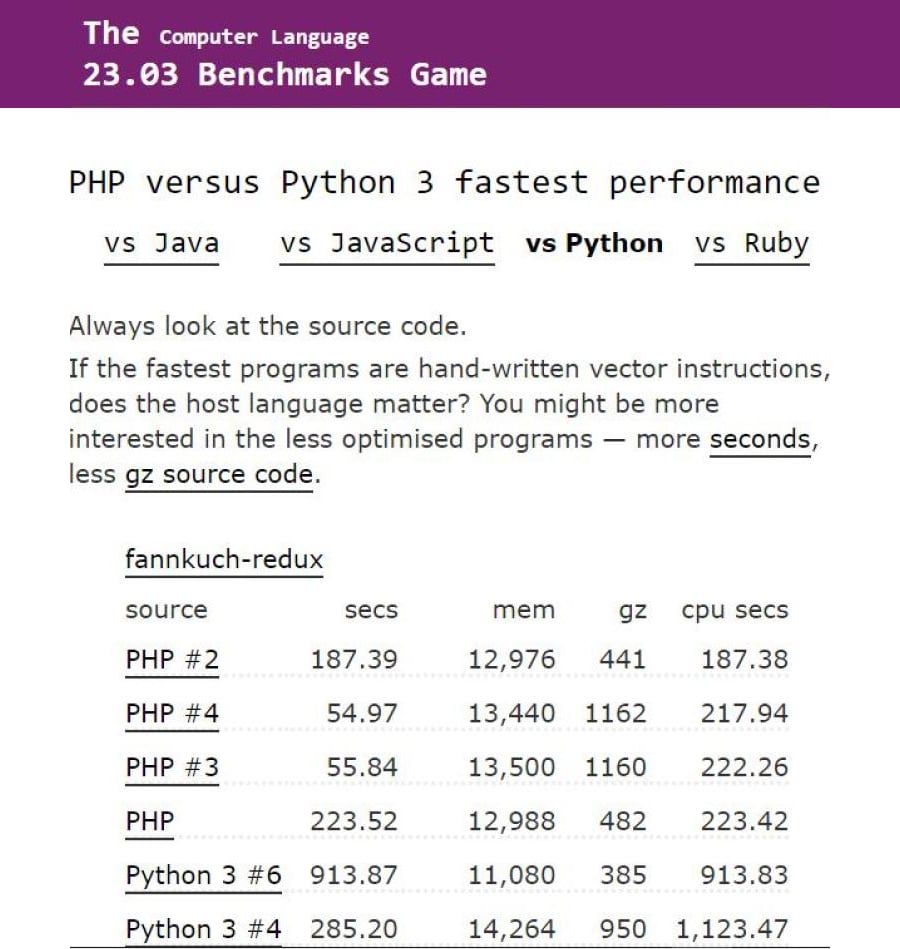
If we talk about the earlier versions of PHP, then they were sluggish, especially PHP 5.x, which required a long time to execute instructions. With PHP 7.x, it appears that their development community has worked hard to improve the programming language’s performance and speed. The latest version of PHP 7 was also introduced with Zend Engine 3.0, making the programming language 2x quicker than before.
Python’s code compilation process, on the other hand, is meant to be faster, even without the use of caching solutions. This code is converted to bytecode when a file is created and/or changed. It was far quicker than PHP was before the introduction of PHP 7.x.
This one goes to Python-1 and PHP-0
4.3 Library Management
The library management in PHP isn’t as good. Composer was launched in PHP 7, and it’s a terrific tool. It’s essentially feature full, and the package management is on level with Python’s. Regrettably, it is still rather young. At the end of the day, Python offers a wider range of mature packages, and its tools are currently easier to install and use.
In comparison to PHP, Python offers a significant benefit.
Python manages packages via Pip ( “Pip installs Python”). Pip makes maintaining multiple libraries within a Python programme straightforward, quick, and easy to analyze your project’s requirements at a look. Pip is a must-have tool in the toolbox of any Python coder.
Python scores higher than PHP in this aspect.
4.4 Environment Management
In the comparison section of PHP vs Python, it’s important to consider environment management, especially when we don’t want to rely on software containers when developing web apps. Let’s see how the PHP environment works in an application server.
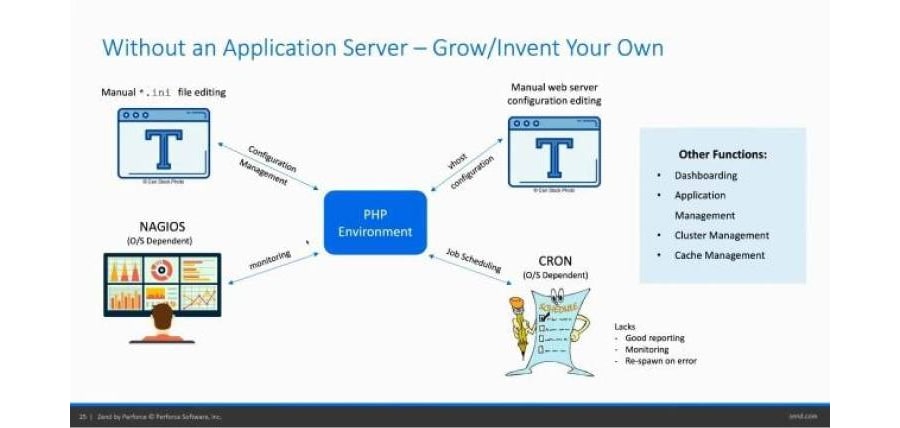
So, when there are no containers, the track of apps installed in languages and other library functions will be difficult to manage. This is not as easy as it appears, and it will take a lot of patience, time, and work.
Speaking of PHP, when it comes to environment management, PHP uses virtPHP. It is, however, no longer operational and has been stored for a long time. This is why even PHP developers recommend using a container rather than virtPHP. The environment management enables developers to reduce their overhead charges, improve on portability, greater efficiency and when we have containers in place, this process becomes easier and is highly demanding.
If we see how Python is at managing its surroundings.
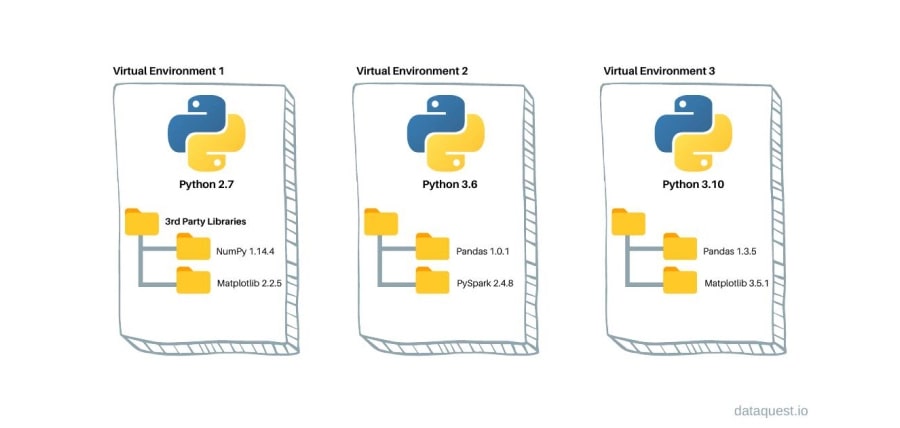
Virtualenv, one of the greatest apps for controlling the environment in Python, is one of the best. It can install and maintain many Python versions simultaneously, as well as switch between them swiftly. Virtualenv is regarded as one of the first environment management programs by the developer community. Here the management of python is better than PHP and hence its weighs higher than PHP.
4.5 Debugging
When developing a new software or a product, the most crucial question isn’t typically what occurs when everything goes well. You’ll frequently need to know what occurs when things go wrong. For seasoned developers, this entails hooking up a debugger and determining where your code went wrong.
Thousands of web app developers utilize both PHP debugger and Python debugger on a regular basis. Step-through debuggers for Python are built right into IDEs like Visual Studio Code or PyCharm If you’re writing Python, all you have to do is press the “debug” button to start debugging.
4.6 Flexibility, Scalability, and Versatility
With a vast range of web frameworks and modules, both Python and PHP are appropriate for web development. As previously said, PHP offers sophisticated PHP frameworks like Symfony, Laravel, and others, so you won’t have any problems with development, testing, or management. On the other hand, Python came up with one of the most popular web framework named Django framework.
When it comes to scalability, however, Python outperforms PHP thanks to its artificial intelligence, data science and machine learning capabilities, which adapt to new trends and grow to meet demand.
PHP, on the other hand, is less adaptable to changing trends and demands, despite some significant recent advancements in the language.
4.7 Security
Because of PHP’s large community support, many security vulnerabilities have been handled, but you must select the most secure option. Python is a more secure programming language than PHP. It contains a number of security features to create complicated python apps with high-end capabilities and defined objectives. When it comes to security measures the security of apps from dangers, it’s a no-brainer. This is why many government agencies and financial institutions choose Python to develop strong apps with high security.
Here Python takes away the higher scale than PHP.
4.8 Developer Community and Support
PHP and Python were first introduced to the market decades ago and have a thriving development community support to back them up. You may find them on specialized websites and forums, and you can ask them questions to improve your programming and web development abilities. PHP has been continually updated since its inception in 1995, with new feature releases and bug fixes. As a result, we now have PHP 7, which is well-known for its speed and efficiency. There is a large community support of PHP developers that can assist you.
Python was first introduced in 1991 and has a big developer community that is always working to improve the programming language. As a result, it has robust community support, similar to PHP. Here PHP wins the game with its involvement with many languages and their developers community also supporting the needs.
5. PHP vs Python- Which is Better?
To conclude on this one, which one is better when it comes to programming languages like PHP vs Python? The decision can be quite onerous. One has to look at every nook and corner of the application to decide on which one goes the best with your needs and project requirements. Though our final evaluation weighs slightly more towards Python, still our advice would be to see your environment, development needs and then make a choice which one will bring a higher difference in your app development process.
Malicious attacks, infiltration, breaking firewall norms, and several other malpractices are quite usual these days. Especially, when it comes to web apps, the need for...
 Jul 4, 2022
Jul 4, 2022 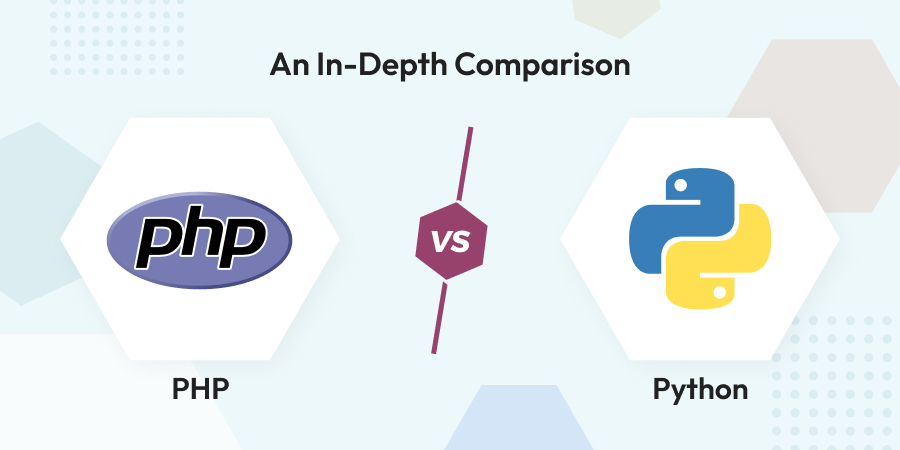
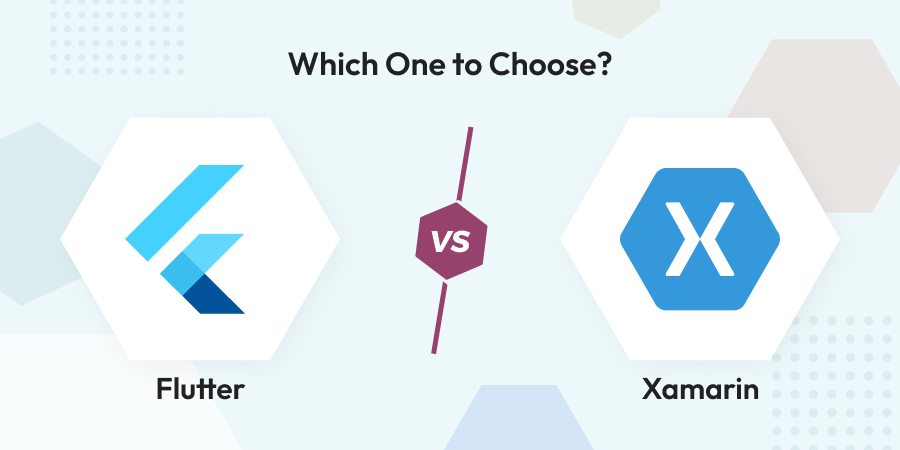
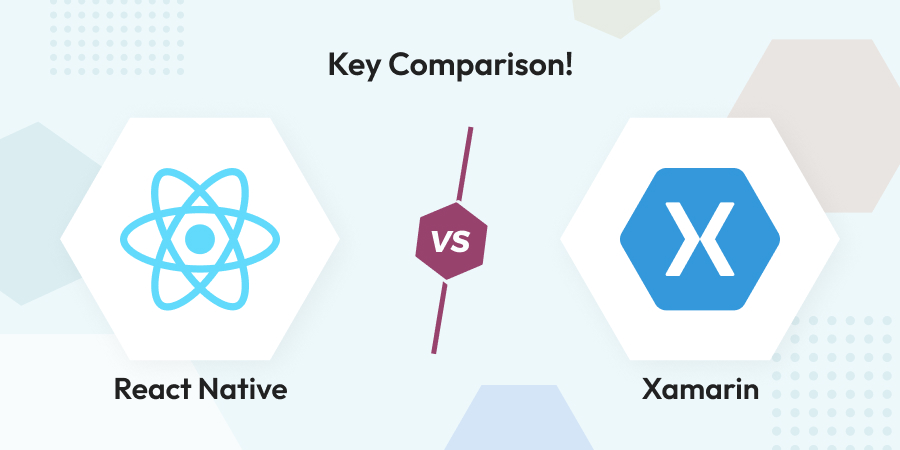
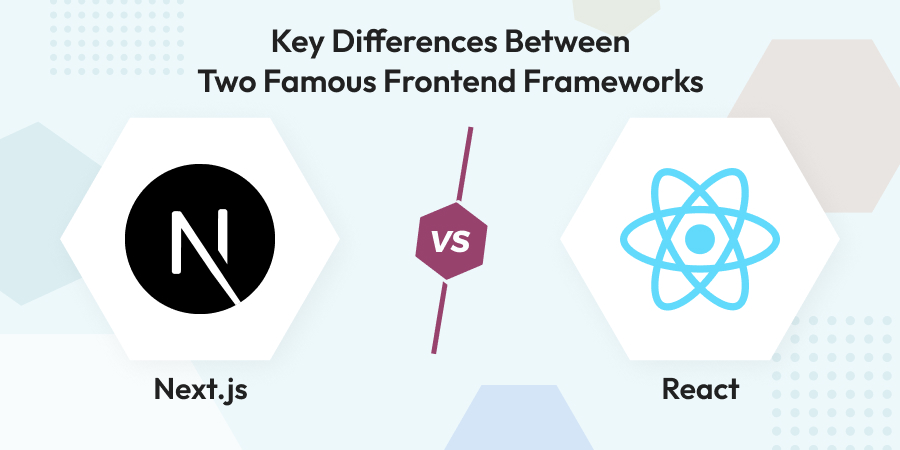
Comments
Leave a message...